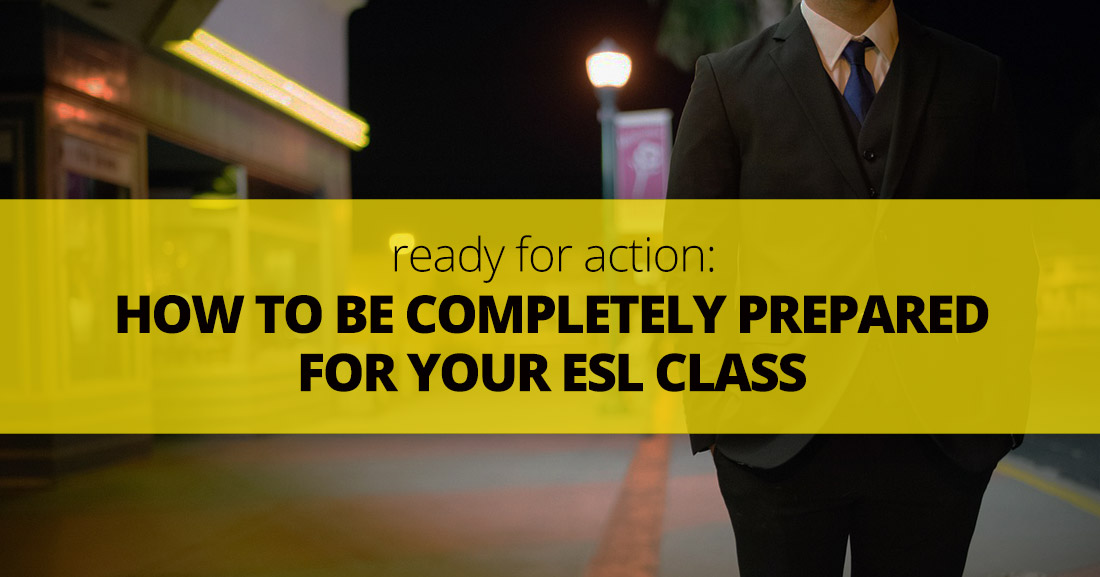Observe and Report: 7 Ways to Promote Professional Development


I suppose it depends on the level of the students, the length of the class and the complexity of the content, among other things, but teachers generally find that they spend less time on planning as their careers progress. A class which might take two very stressful and intense hours for a new teacher to thoroughly prepare might be dashed off in twenty minutes by someone more experienced.
For all of us, though, irrespective of how many years we’ve spent in classrooms, it’s a very worthwhile habit to check over our preparations one more time before the lesson begins. There are always little ‘notes to self’ which will prove useful, or ideas for the lesson which we should commit to paper before they’re forgotten. You might find that a long-cherished plan is becoming out-of-date, or that you made notes, last time around, about restructuring the content, or presenting it in a different way. One final glance at the plan reassures us that the lesson is ready, and that you’ll be able to handle the unexpected when it crops up.
I keep everything in a single, well-organized folder, so I always know where things are. I’ve got dividers and color-coordinated tabs for different topics and levels. This might sound a bit OCD, but I actually can’t remember the last time I showed up to a class without something I needed; I open the folder, and it’s just there.
Check that you have your class list, or whichever method of taking attendance you use (this is often digital, these days), as well as sufficient copies of any handouts you’re going to need.
Then, there’s your lesson plan…
A teacher who walks into a classroom with absolutely nothing written down by way of a plan (or even just a simple ‘aide memoire’) is either supremely confident, highly experienced, or rather foolish. Writing a plan is the number one way to avoid problems of timing and structure, and to avoid forgetting details. It doesn’t need to be a great pedagogical tome – a single sheet of paper can amply accommodate almost any kind of plan – but, simply put, if the plan isn’t written down, the chances of something going wrong increase enormously.
Your plan should include:
For new teachers in particular, this should include the ‘interaction patterns’ of each section: Teacher to Student (T-S); Student to Teacher (S-T); Student to Student (S-S). (For example, presentation of new vocab would be T-S, pairwork practice would be S-S, and feedback after the practice would be S-T.) We label the lesson sections in this way to make sure there is variety, and that the teacher isn’t dominating proceedings. Hint: if almost every section is labeled T-S, then you’re actually a lecturer, which isn’t the best format for interactive, inclusive language learning.
Put yourself in your students’ shoes. If you were a language learner of their level and background, what would you find difficult about the coming lesson? Would it be the grammar work, or perhaps pronouncing the new vocabulary? Focus on these areas so that you understand them as fully as possible. The better grasp you have, and the most you’ve considered exactly why we say (for example), ‘I should go’, as opposed to, ‘I must go’, then the more confidently you’ll be able to teach the content and deal with your students’ questions.
Then think about classroom management. Are you going to be dividing the students into groups, or moving them around? (I hope so! Ensuring that your students work with different people, and perhaps also change location during a class, brings in variety and adds an important social element). If so, how will you explain these instructions to your students? Consider gestures, a diagram, and/or referring to what happened during similar situations in the past.
I’m completely serious about this. Even if you’ve spent years in the classroom, this will have value.
Stand in front of a mirror and deliver (at the very least) the Presentation section of the class. Even better, record yourself while doing so; audio only is fine, but video will teach you more about yourself than anything else you might do.
Then consider the level of your students. Did you speak slowly enough, and use vocabulary of an appropriate complexity? Is there a more concise way to explain a particular word or grammar point? Bring in gestures, drawings, objects… anything which reduces your Teacher Talking Time (TTT) and better communicates your meaning. Ask for help with this – colleagues, mentors, family, friends and roommates will all be happy to advise you, especially if you’re a nervous, new teacher. Rehearse a few times until you’ve boiled things down to a format which is tight, simple, and above all clear.
And when you’ve finished your rehearsals, written your plan, brought together your paperwork and double-checked that you truly know your stuff, you’re a well prepared professional who is ready to teach a terrific lesson.
Then, we can go even further and really hit one out of the park.
Consider augmenting your examples with Internet content. Tailor your examples to include your students’ names or backgrounds. If you’re presenting on a certain topic (the weather, business, something from the news, etc) then write down a few interesting facts; you could quiz your students, or have them guess (e.g. ‘So, Libya’s in the news again this week – remind me of it’s capital?)
Facts are also nice to have to hand, just to surprise your students. I’ll never forget teaching a business class and wheeling out a winning fact about the LIBOR scandal. One of my students said, and I quote, “How did you know that? You’re just an English teacher”. He later apologized, but he made an important point. Our students might not see us as the fully-rounded people that we are, and the more we establish ourselves as true professionals, with an interest in the world and an engagement in its events, the more respect we’ll command.
The final step actually takes place after the class. Think about what just happened. Was it a success? Did you hit your learning aims? How was the pace of the class? Did you rush your explanations, or did any new words really trip your students up?
Make some brief notes on your plan, advising your ‘future self’ on these and other matters. Note any disciplinary problems on your class list, and be sure that you know what homework you’ve assigned, and when it’s due.
A new teacher will receive a much-needed boost from that sense of security and familiarity which comes from genuinely understanding the material, and having rehearsed how best to explain it. Experienced teachers know the feeling well (and I’m sure we all know its opposite, too!) Good planning, and checking everything over before class, are great habits to cultivate as you develop as a professional.